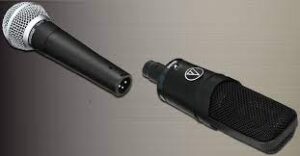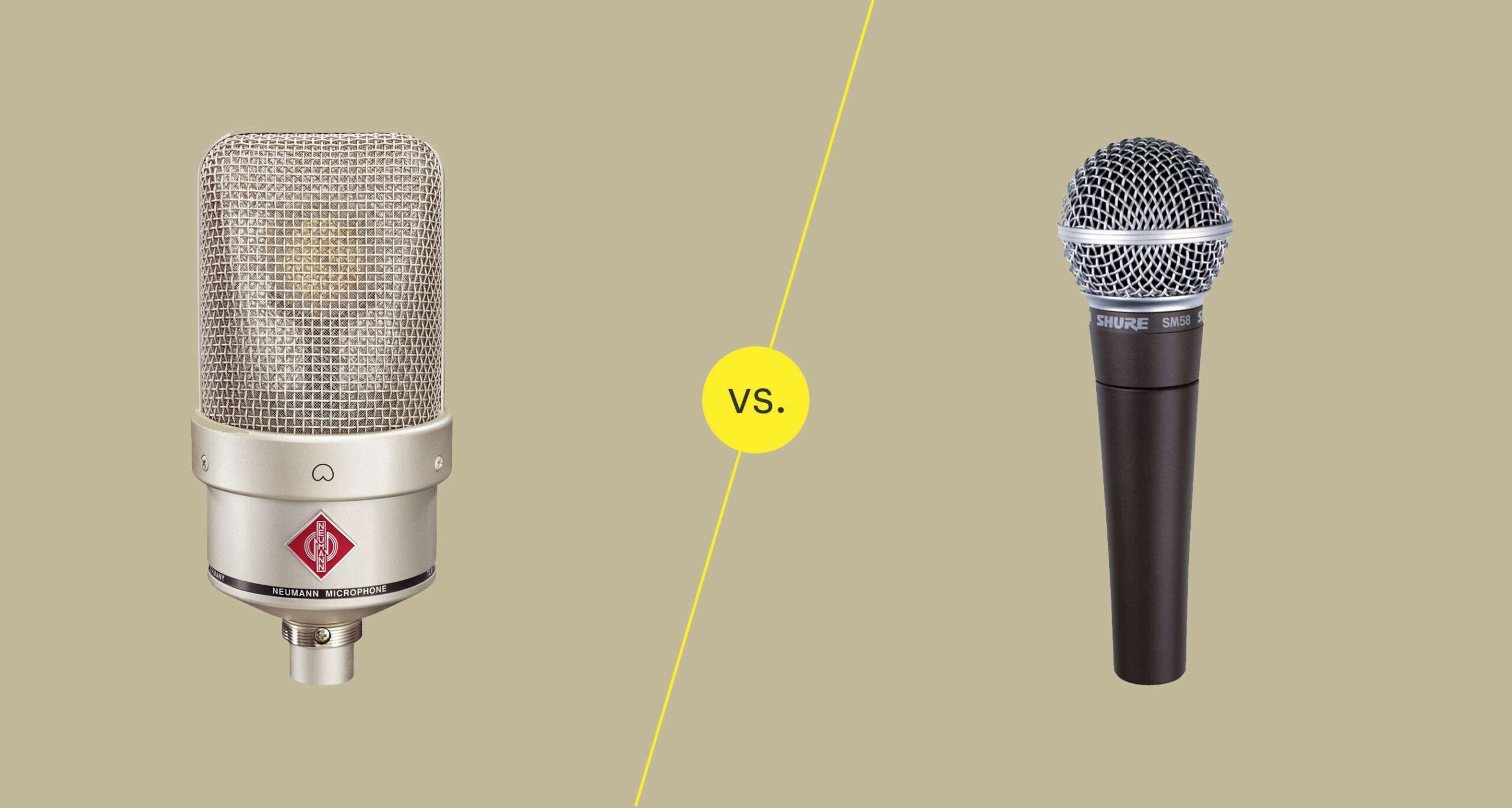The difference between dynamic and condenser microphones will remain one of the most relevant debates on the internet, and anyone who has worked with so many microphones or has a good number of microphones in his possession would own at least one dynamic and condenser microphone.
You can use dynamic and condenser microphones in countless applications, and you can also use these microphones for the same instrument. Even when you ask engineers why they choose the microphone for a particular application, they tell you the microphone fits into the application.
Microphones are designed to do the same thing, and this includes recording or amplifying captured sounds. The device used in capturing sound in the past was the gramophone, and this device has been seen in several television shows and movies.
Microphones are designed to be different from the gramophone, and this is because they are designed to convert sounds into analog signals. These signals are analog and digital, and analog signals are like sound waves that travel through transducer means.
On the other hand, the digital signal is analog sounds that have been converted into numbers, but we want you to picture an image on a computer. The picture might look very real, but you will end up noticing ugly edges when you zoom closer into the picture. It is the same thing that happens when analog signals are converted into digital signals.
You will discover aliasing when you take a closer look at analog signals that have been converted into digital signals, and aliasing is known as the inevitable error that happens when a signal fraction is rounded up close to a digital format.
However, this is no longer a serious issue nowadays as the digital signal depth has increased to a point where it is almost impossible to identify the aliasing. In every microphone, there is something called a membrane used in converting sound waves to signal waves, and this means microphones are used for converting one form of energy into another.
The technology a membrane uses is what helps in distinguishing one microphone from another. Based on its unique technologies, dynamic and condenser microphones got their names. Dynamic microphones use a thin membrane to receive vibration from sound waves, and a circular wire coil known as the voice coil is placed underneath the membrane.
On the other hand, condenser microphones also have a thin membrane on the inside, but this thin membrane is made using a metal-coated plastic or a thin metal.
Microphones have become advanced nowadays, and this has made the market very competitive. The top-rated dynamic and condenser microphones on the market have similar statistics, and their sonic characteristics have turned out to be theoretical.
It is why we mentioned earlier that when you question a sound engineer why a particular microphone is used in a specific setup, they end up telling you the microphone is best suited for it. It is why you need the help of our difference between dynamic and condenser microphones guide to help you make a wise decision.
Content Navigation
Difference Between Dynamic And Condenser Microphones

Dynamic microphones have internal components that do not lack sophistication. It is why the dynamic microphone is designed to be resilient, durable, and can repel high sound pressure.
Compared to condenser microphones, dynamic microphones can withstand being dropped because of how simple their components are. In addition, some of the features of a dynamic microphone include;
- They are designed to be tough.
- Dynamic microphones are perfect for close up recording
- They do great when used for live performances
- They have a good frequency response
- They are less expensive compared to condenser microphones.
Condenser microphones are made using different internal components, unlike dynamic microphones, and condenser microphones are made to have a resistor, battery, backplate, and diaphragm.
One of the differences between the dynamic and condenser microphones is that the condenser microphone uses a diaphragm and an electrically charged backplate instead of just a magnet and voice coil. As a result, a condenser microphone’s transducer weighs less than that of a dynamic microphone.
Some Amazing Features Of The Condenser Microphone;
- They are more sensitive compared to the dynamic microphone
- They deliver better transient response
- They make use of phantom power
- The condenser microphone is easy to break
- They come with a DB pad
- They have a good frequency response
The truth is searching for a new microphone can be daunting because the quality and styles of the microphones on the market vary and are different.
With so many microphones on the market, price is no longer the only specification you need to look at when shopping for a microphone. There are several other specifications one should consider when shopping for a microphone. It is why producers and podcasters need to be careful when shopping for a reliable microphone.
Conclusion – Difference Between Dynamic And Condenser Microphones
The different microphone types on the market are either condenser or dynamic microphones, and microphones are classified based on their transducer types. The transducer types will also give you an insight into how the microphones will perform.
We have offered a well-detailed response to your question on what microphone is best between the dynamic and the condenser microphones. Still, durability is a factor that also needs to be considered when shopping for these microphones.
Condenser microphones are known for their durability, but dynamic microphones are home to the most durable microphones ever to hit the market.
Up there are all you need to know about the difference between dynamic and condenser microphones, and we have also added some features that will make your decision-making process a fast and easy one.
It should interest you to know that dynamic and condenser microphones are not the only types of microphones on the market. In contrast, another type of microphone is the ribbon microphone, designed to be totally different from the dynamic and condenser microphones.
Related Posts
Best Budget Wireless Surround Sound System
How To Connect Speaker Wire To TV
Wireless Vs Wired Surround Sound Speakers

